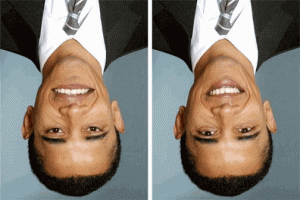The Science Behind Visual Illusions
Visual illusions may seem like they are deceptive tricks that are being played on your mind. However, it seems that visual illusions are the norm rather than a novel exception. While visual illusions provide entertaining examples of this phenomena, it is known that the perception of the brain can often be different from the physical reality. Understanding that what we perceive with our vision may be different than the physical environment is essential in order to process the science behind visual illusions. In order to understand how our brains create these different images, it is necessary to be aware of how visual processing works.
The Process of Vision
 The visual process begins with light bouncing off of an object. Light then passes through the cornea, which is the clear outer part of the eye. The cornea refracts the light rays as they pass through the pupil, which is the black part of the eye. The iris then expands or contracts to control the amount of light that passes through. The light then goes towards the retina, which contains specialized cells, called rods and cones, to detect the light. Rods and cones convert the light rays into electrical signals that are sent through the optic nerve. The brain then processes the electrical signals in the optic nerve to create an image.
The visual process begins with light bouncing off of an object. Light then passes through the cornea, which is the clear outer part of the eye. The cornea refracts the light rays as they pass through the pupil, which is the black part of the eye. The iris then expands or contracts to control the amount of light that passes through. The light then goes towards the retina, which contains specialized cells, called rods and cones, to detect the light. Rods and cones convert the light rays into electrical signals that are sent through the optic nerve. The brain then processes the electrical signals in the optic nerve to create an image.
So, Why Do Visual Illusions Happen?
The entirety of the visual process discussed above takes about one-tenth of a second. Clearly, the brain undergoes many steps in processing an image of the environment that it is seeing. In order to do all of this so quickly, the brain has many shortcuts that allows for the interpretation of the electrical signals from the optic nerve extremely quickly.
These shortcuts have an evolutionary basis. Our vision is essential in being aware and alert in an environment. Our brains must be proficient in quickly processing information and making judgements on them. Therefore, instead of focusing on everything in the visual field, these shortcuts allow the brain to focus on what is important.
The embedded video provides a concise explanation of the visual process and its evolutionary basis. The video includes the scientific explanation of several popular visual illusions with such as the Hering Illusion, Mach Band Illusion, Hermin Grid, and Peripheral Drift.
As the video mentioned, visual illusions can apply to differences in perception in terms of color, shape, motion, and more. Chapter 5 (Ward, 2015) provides many interesting examples through visual illusion of how our mind uses these shortcuts to quickly process visual information.
The Kanizsa Illusion
Do you automatically perceive a white triangle that is not really there?
Explanation: This effect is caused by illusory or subject contours. Illusory contours are believed to be caused by early visual cortical regions such as V1 and V2. These types of visual illusions cause the brain to perceive an edge when there is no edge present. An alternate explanation for the Kanizsa Illusion has its basis in the Gestalt theory, which states that similar objects are usually perceived as parts of a whole. Therefore, based on the Gestalt principle of good continuation and closure, we ignore the gaps in the triangle edge to interpret a whole image.
Rubin Vase Illusion
Do you see a vase or faces in this image? Or both?
Explanation: This studied can be explained by how visual processing works to preserve perceptual stability. This illusion is an example of figure-ground segregation. The brain processes a visual display by segmenting into objects and background surfaces. In this case, if the white is seen as the background, the brain would interpret the faces as the object. If the black is seen as the background, the brain would interpret the vase as an object. By shifting attention to different sets of contours, the brain can experience a “perceptual flip” that allows for the interpretation of both objects.
The Thatcher Illusion
 What is wrong with this image?
What is wrong with this image?
Explanation: The brain processes face in a holistic manner. This holistic processing, especially with an inverted image, hinders the brain from detecting changes in the face. We tend to view the face through top-down processing, which means we view the face as a whole image rather than multiple parts. When the image is viewed right-side up, the anomalies (such as inversion of the eyes and mouth) in the left photo become obvious. Because we are used to viewing faces from an upright orientation, we store faces in the brain upright as well- which makes it hard to see the abnormalities with an upside-down face.
Visual Illusions: Trick or Treat?
It may seem like visual illusions are evidence that there is a lot of room for errors in perception and mistakes in visual processing. However, the awareness of these illusions display a great deal of information regarding how visual processing works within the brain. Through the illusions listed above, we learn a lot about how the brain strives to interpret images as a whole using different methods to create a full image. It is clear that the brain jumps to conclusions in order to process information in the most efficient and fastest way possible.
Always remember, what you see is not always what you get!


